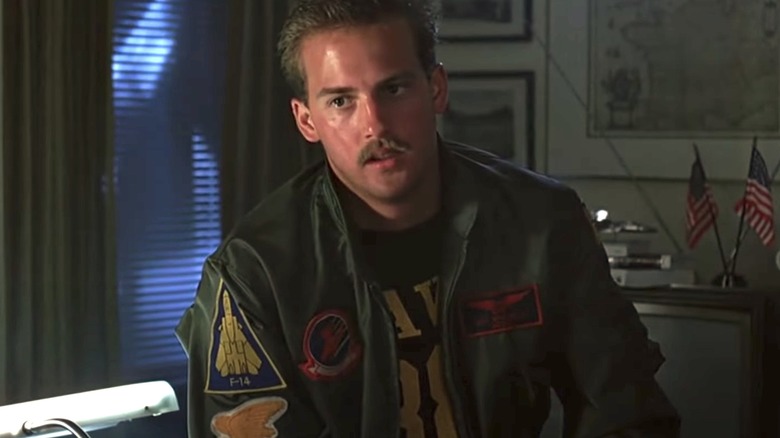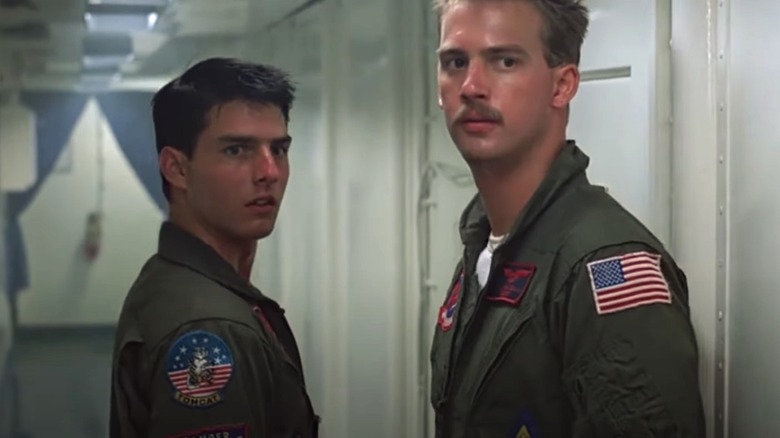How Did Goose Die In Top Gun - And Whose Fault Was It?
It's easy to argue that 1970s staples like "Jaws" and "Star Wars" gave birth to the era of blockbuster cinema. But it's also equally correct to claim the "greed is good" 1980s were the decade Hollywood more or less perfected the blockbuster formula. And in the annals of '80s blockbusters, few movies fit the bill quite as well as Tony Scott's iconic 1986 actioner "Top Gun."
Released in the spring of '86, the film features then-rising star Tom Cruise as Pete Mitchell (call sign "Maverick"), a hot-shot US Naval Aviator who, along with his best pal and Radar Intercept Officer Nick "Goose" Bradshaw (Anthony Edwards), is unexpectedly tapped to join the best of the Navy's best at the famed flight school of title. The action heats up when Maverick and Goose start competing with pilots of equal ability. And in a shocking turn of events midway through "Top Gun," a mid-air accident leads to Goose's tragic untimely death.
The particulars of that unforgettably tragic twist of fate are never precisely made clear, though it appears Goose endures fatal head and likely neck trauma when he strikes the canopy of his F-14 upon ejecting from the failing aircraft. The sight of Goose's lifeless body being parachuted into the Pacific was emotionally scarring to an entire generation of moviegoers. The death understandably scars Maverick as well, with the flyboy clearly still carrying the grief and guilt of it decades later when he resurfaces in "Top Gun: Maverick."
Was Maverick really at fault for Goose's tragic death in Top Gun
Pete "Maverick" Mitchell is ultimately cleared of any wrongdoing in the death of Nick "Goose" Bradshaw in "Top Gun." And that naturally begs the question of exactly who is to blame for the heartbreaking demise of Goose. But the answer to that question is pretty much a hearty shoulder shrug, with several factors playing into the mid-air accident behind it.
The tragedy unfolds with Maverick flying wingman to his top program rival, Tom "Iceman" Kazansky (Val Kilmer), with the duo chasing down an instructor-piloted aircraft during a training exercise. Upon engaging in aerial combat, Iceman repeatedly tries and fails to get radar lock on the craft to signal a kill. Better positioned to take aim, Maverick anxiously jockeys for his own shot. But as Iceman breaks off, Maverick and Goose are caught in his "jet wash," causing them to lose power to both engines and spin out of control as pilot and co-pilot opt to engage the fatal ejection.
Thrilling as the sequence is, it would seem to leave both Maverick and Iceman partially on the hook for Goose's death. Yes, a case could easily be made that Maverick was trailing too close to Ice in his own pursuit of a kill. And he also failed to regain control of his and Goose's plane when it first began to spin. As for Iceman, well, he clearly should've given way to Maverick long before he finally broke off. Whoever is to blame, Goose's "Top Gun" exit continues to rank among the most devastating onscreen deaths in blockbuster history and sets the stage for much of the drama in "Top Gun: Maverick."

